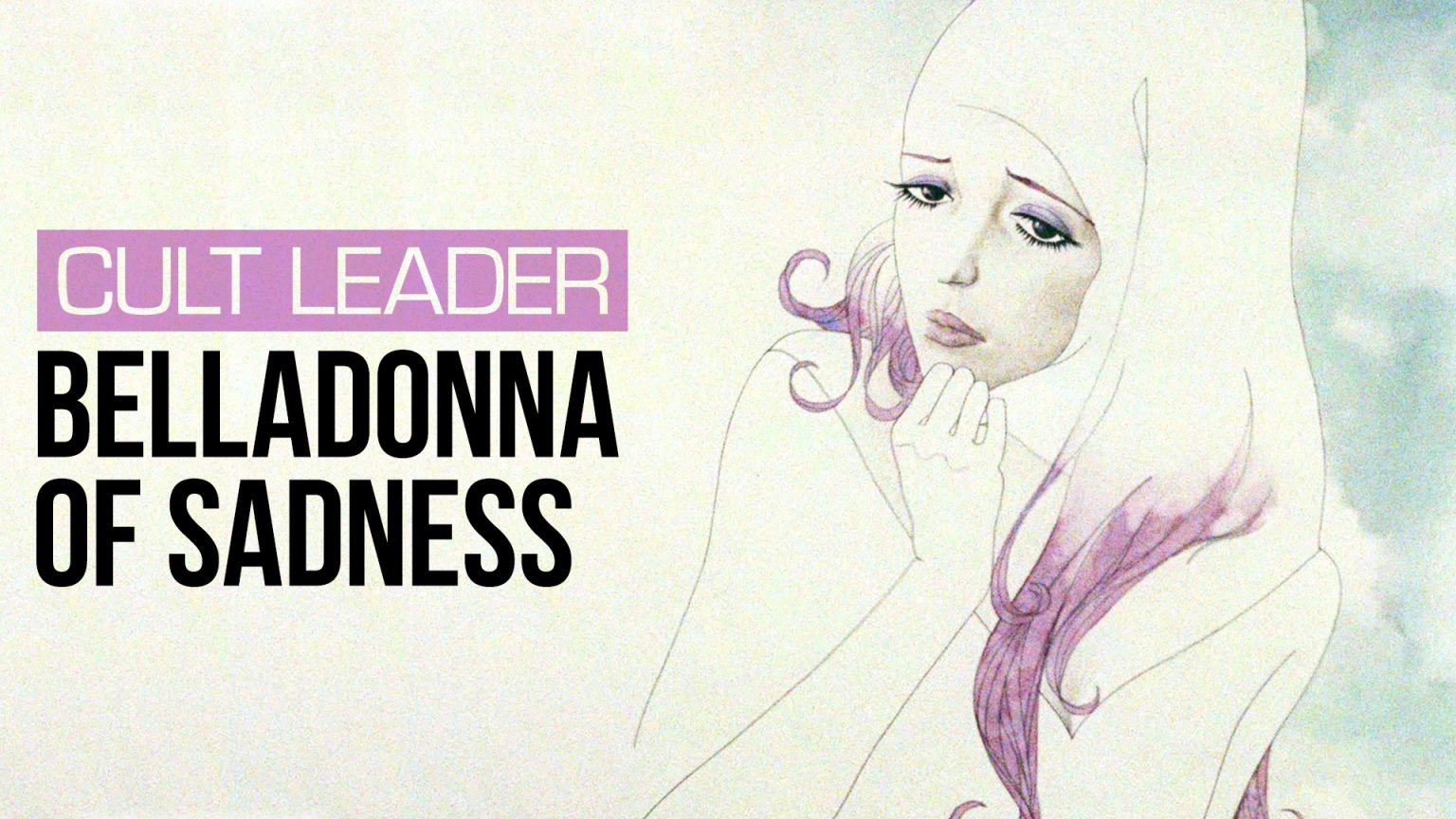Are the “erotic fantasy” and “revenge horror” genres mutually exclusive? To today’s viewers, the concept of combining the elements of female sexual discovery and sexual assault may seem deeply problematic, and understandably so. Fairy tales, in particular, are known for blending these disparate experiences to varying degrees of cringeworthiness. Belladonna of Sadness is a 1973 Japanese experimental animated fairy tale based on historian Jules Michelet’s 1862 book Satanism and Witchcraft, which in turn delineates the breadth of female power under patriarchal rule. The setting of the film is an imagined medieval village, but the institutionalized misogyny reads as eerily modern.
Belladonna of Sadness begins where most fairy tales end: Happily ever after. Young peasants Jeanne and Jean (not a confusing naming convention in the slightest) are in love and about to marry when the baron of the village institutes his own version of “prima nota” and allows every man in his court to violate Jeanne on her wedding night. Afterward, as a traumatized Jeanne tries to rebuild her life, she is visited by an unnamed Creature who helps her not only achieve financial success for herself and Jean but also reclaim her sexuality. Out of jealousy, the baron’s wife convinces him that Jeanne is a witch possessed by the devil who will try to steal his power. They dare not burn her at the stake—according to legend, so long as her pride remains intact, that act will only make her more powerful—so they lock her in a dungeon instead.
While incarcerated, Jeanne finally gives herself fully to the Creature and ascends to the final stage of her feminist witch realness. When the village is plagued by the Black Death, she cures them all with her secret herbal remedies and good old-fashioned magic. When she refuses to reveal her Black Death cure to the Baron, he burns her at the stake, and then, as predicted, her revolutionary spirit spreads to the rest of the village. Orson Welles’ observation that a happy ending is dependent on where you choose to end a story is astutely illustrated by the events bookending Belladonna of Sadness: The film begins with love and marriage and ends with the fomentation of rebellion. The epilogue even mentions the French Revolution and credits women for their part in it, which is somewhat of a non-sequitur unless the viewer is aware of the author’s extensive knowledge of the French Revolution.
Belladonna of Sadness was the third of the Animerama trilogy of animated films released by Mushi Production, following A Thousand and One Nights in 1969 and Cleopatra in 1970. Since the film began production in 1967, its marked psychedelic art direction may have seemed out of step by the time of its 1973 release. “Animation” may be a loose term for the movie’s style: Most of the scenes are pan shots over still illustrations that look like they were taken right out of a deck of tarot cards, with only intermittent moving images. Despite a nomination at the Berlin Film Festival, it was a commercial failure upon its release and contributed to the bankruptcy of its production company, and only received a restoration and U.S. release a few years ago.
The central conflict in Belladonna of Sadness, which echoes the same questions raised by Robert Egger’s 2015 debut film The Witch, concerns the Creature, its motivations, and its relationship to Jeanne. Was it, as it claimed, actually Jeanne herself, or, more pointedly, a device she needed to find strength in an uncaring world? Were the villagers correct in assuming that Jeanne was possessed by Satan, or was she driven to dark forces by an oppressive society? Is the Creature just another entity that is using and deceiving Jeanne, or is it genuinely invested in empowering her for a feminist revolt? The narrative of women and witchcraft has been so pervasive through the centuries, it is no surprise that many women are once again “leaning in” to the practice. These days, magic is as much about self-love and solidarity as it is about binding toxic men and speaking truth to power.
A woman filled with power and rage can be as shocking as any gory bit of grindhouse, so perhaps it is inescapably exploitative. From the deadly heroines of Jean Rollin and Jess Franco films to Anna Biller’s The Love Witch, women have carved out a niche in cult cinema where men must settle for being the prey—or at the very least, the backdrop. The debate will always rage over whether viewers can or should glean artistic pleasure from films that portray the female sexual experience through a male lens, but hopefully, Belladonna of Sadness is an occult film that will inspire women to summon their powers, ready their coven, and use their powers for the good of the rebellion.
Watch Now: The “animated” revenge fairy tale Belladonna of Sadness, now streaming on Fandor.




